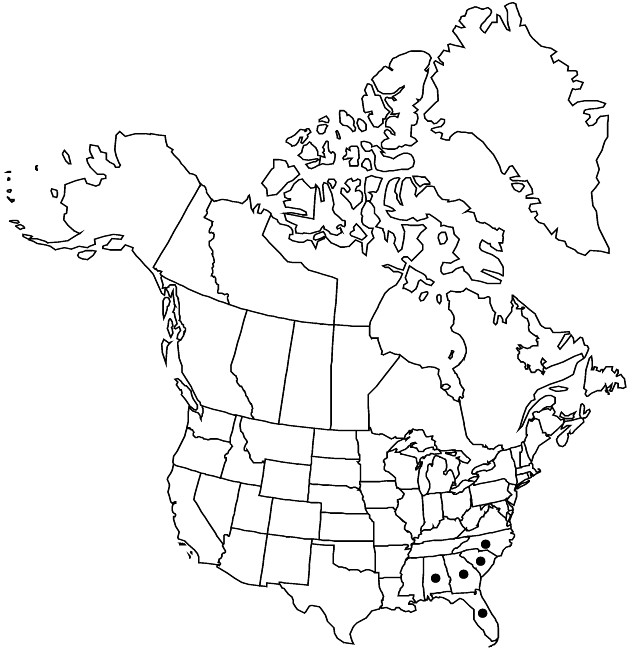Eupatorium anomalum
Bull. Torrey Bot. Club 23: 106. 1896.
Perennials, 80–150+ cm. Stems (from tuberous rhizomes) single, densely branched distally (shoots often develop from lateral buds), puberulent throughout (denser distally). Leaves usually opposite (distal sometimes alternate); sessile or subsessile; blades 3-nerved distal to bases, elliptic to oblong, 15–50 × (5–) 10–20 mm, bases cuneate, margins entire or serrate (unevenly toothed), apices rounded to acute, faces puberulent (abaxial) or glabrate (adaxial), glanddotted (both). Heads in corymbiform arrays. Phyllaries 8–12 in 2–3 series, oblong to lanceolate, 2.5–5 × 0.5–0.7 mm, apices rounded to acute, abaxial faces puberulent throughout. Florets 5; corollas 3–3.5 mm. Cypselae 1.8–3 mm; pappi of 20–35 bristles 3.5–4.5 mm. 2n = 20, 30, 40.
Phenology: Flowering Jul–Aug.
Habitat: Wet, low ground, flatwoods
Elevation: 10–100 m
Distribution

Ala., Fla., Ga., N.C., S.C.
Discussion
Of conservation concern.
Eupatorium anomalum has been proposed to be intermediate in morphology between E. rotundifolium and E. mohrii and, possibly, a hybrid derivative of that pairing. Molecular data suggest that its derivation is from hybridization between E. serotinum and E. mohrii.
Selected References
None.
Lower Taxa
"fine" is not a number.